PROTECT YOUR DNA WITH QUANTUM TECHNOLOGY
Orgo-Life the new way to the future Advertising by AdpathwayOne of the most important rules for gardening is to never fertilize a stressed plant. This applies to cold and hot weather, and it prevents a number of issues tangentially and directly related to breaking it. There are many reasons for this, including soil salinity issues, and pest issues too.
Dry soils don’t have the nutrient mobility that moist soils do. Secondly, plants that aren’t suited to high heat tend to slow their growth above 85°F (29°C). For these two reasons, feeding plants in drought can lead to fertilizer burn. This further burdens plants and compounds your problem.
How you fertilize depends on what plants you’re growing, and how extreme the conditions are in your locality. Even though you should avoid fertilizer in drought, there are other gentler ways to feed plants in high heat.
Peruvian Blend Zinnia
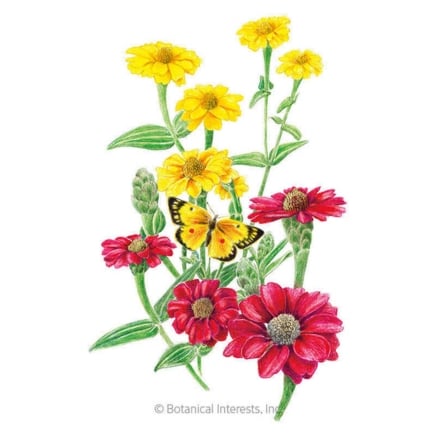
Peruvian Blend Zinnia Seeds
Gem Blend Signet Marigold
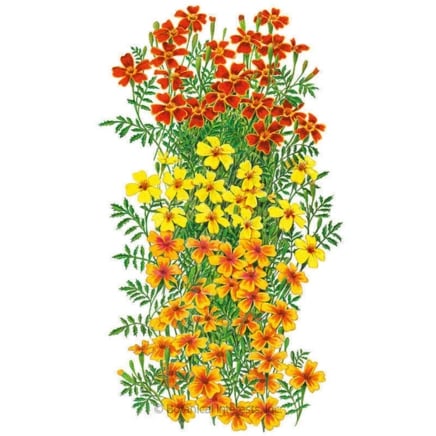
Gem Blend Signet Marigold Seeds
Violet Queen Salvia
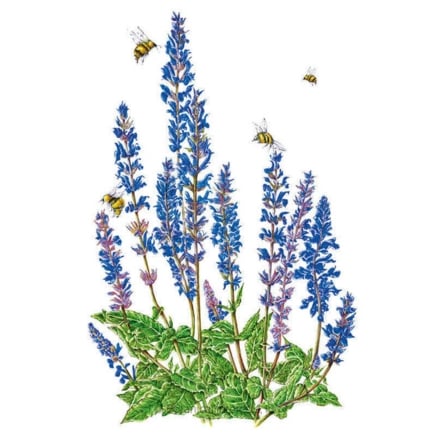
Violet Queen Salvia Seeds
Tips for Fertilizing in Hot Weather
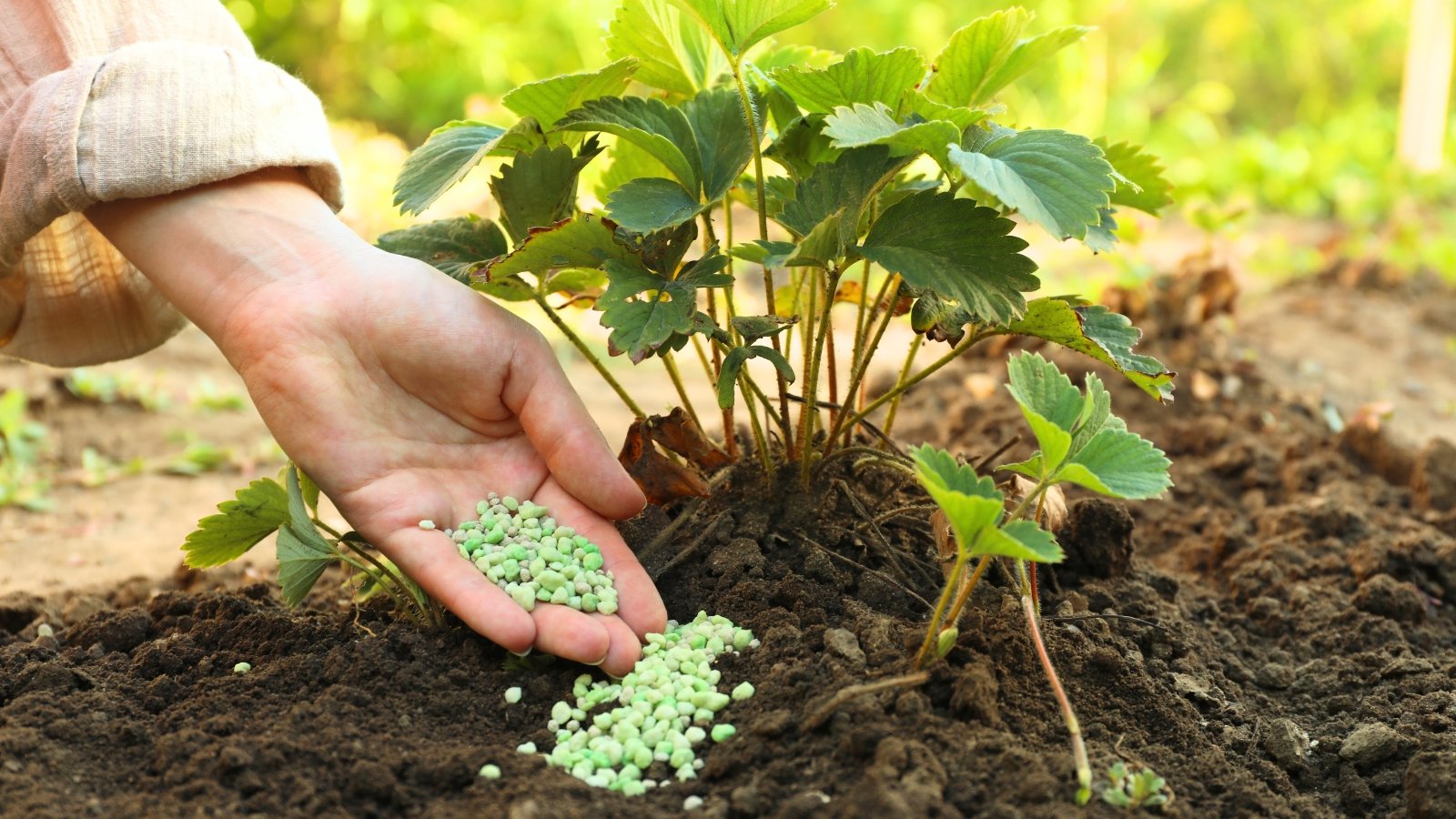 Heavy feeders need steady moisture before nutrients can work.
Heavy feeders need steady moisture before nutrients can work.To start, let’s cover a few solid rules you can use to guide your decision-making process as you determine when to feed your plants. Then we’ll break these down to give you a bit of nuance. Start with these, then choose whether or not to fertilize to the best of your ability.
The plants you’re growing are the most important deciding factor for whether or not to fertilize. Some plants are used to the heat and can handle a little feeding. Others may be used to the heat, but don’t need fertilizer at all due to their ability to adapt to local conditions. Desert plants and cacti, for instance, store water and nutrients, and don’t need extra in the dead heat of summer.
Consistent soil moisture is important for nutrient uptake. If you are growing heavy feeders that are still producing in heat, remember to keep a consistent watering schedule. Watering in the morning is more effective than watering in the middle of the day. The evening is a good alternative time. Always water ahead of your feeding to boost nutrient mobility in the soil.
When plants experience heat and drought stress, do not water them. Their growth processes and their ability to take in nutrients (even in moist soil) are not active during drought, and they enter dormancy. It takes time for plants to enter and exit this state. Look for signs of new growth and continued fruiting to begin fertilizing again.

Lawns
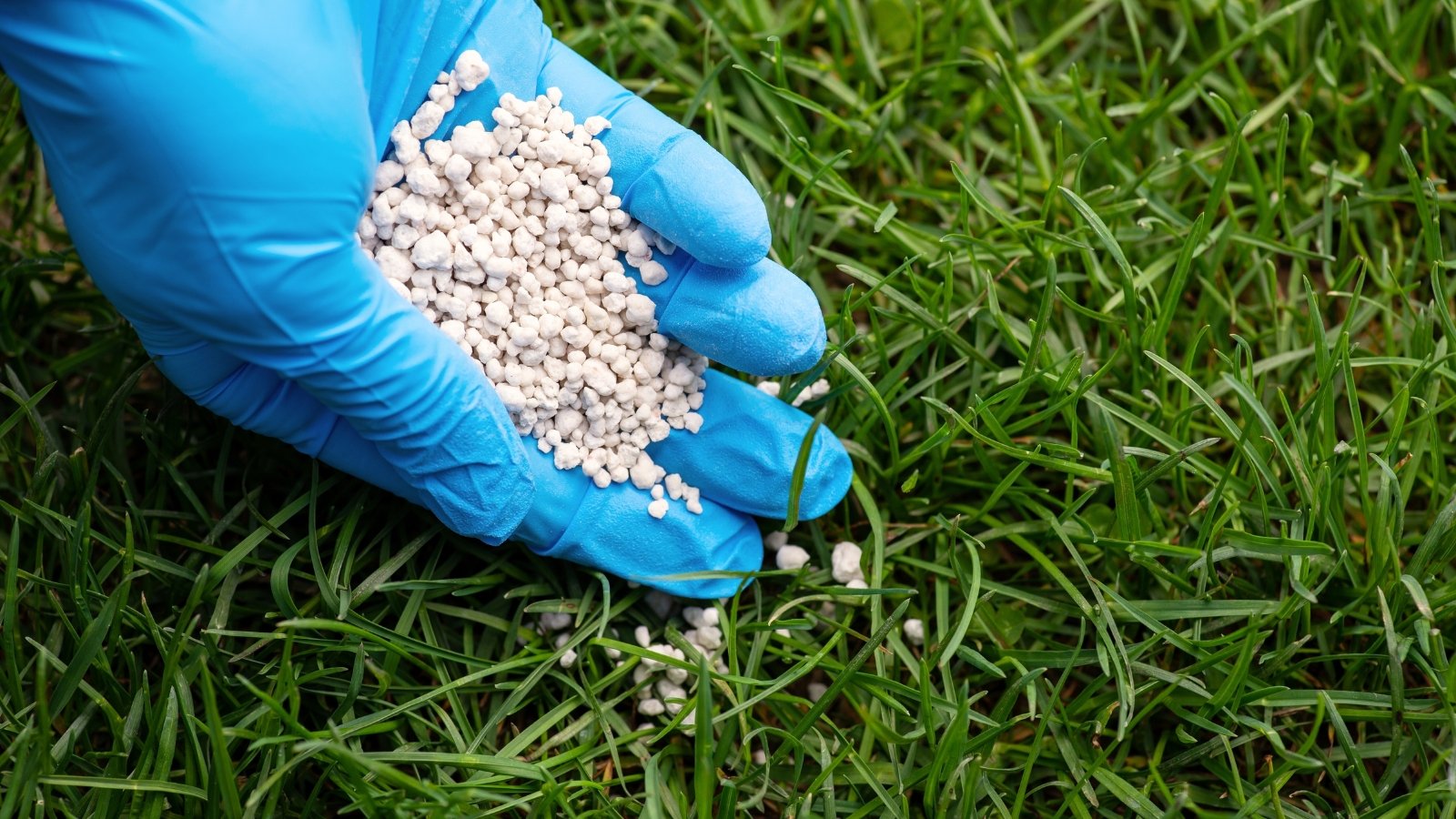 Extra nitrogen in a heatwave can do real damage.
Extra nitrogen in a heatwave can do real damage.In my neck of the woods in Texas, we are already experiencing triple-digit heat indices. I can’t be outside for more than 30 minutes without seeking shade, drinking tons of water, and sitting down for a minute. Naturally, my lawn can’t handle any extra nutrients either.
This might not be the case in Michigan, or in lower zones that rarely experience temperatures above 85°F (29°C) in summer. In these places, it’s totally ok to keep your regular fertilizing schedule. But if you expect a heat wave, hold off.
Especially because lawns are typically fertilized with high-nitrogen feeds, it’s best to wait until the heat passes. Let a few days of cooler weather pass, and then resume. Here in the South, we wait until fall to fertilize again.
Annuals
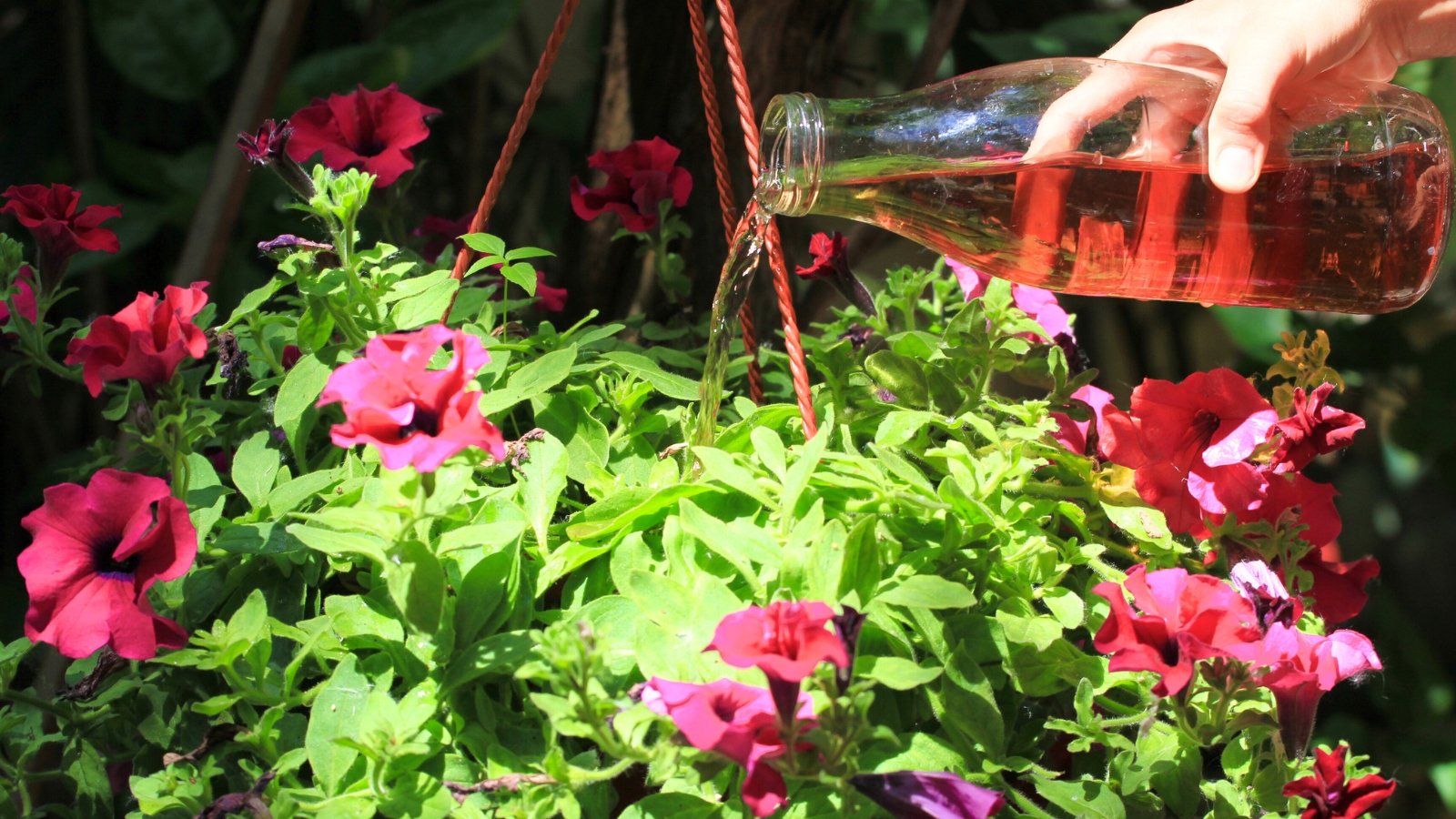 Petunias thrive when fed low and slow in summer.
Petunias thrive when fed low and slow in summer.Heat-tolerant annuals, like lantana, marigolds, basil, cosmos, and sunflowers, respond to a feeding in the moderate heat of the 90s (around 32°C). In this case, it’s best to go for a gentle organic liquid. Dilute to ½ or ¼ strength and apply at the base of the plant. The same goes for begonias, petunias, and impatiens (among others).
It depends on the plant, but regular feeders usually handle this kind of feeding every couple of weeks to every month or so. To give them a boost in areas where the heat soars in summer, add a small amount of all-purpose organic powder into the soil at the time of planting in spring. This should tide them over through the hottest months.
Perennials
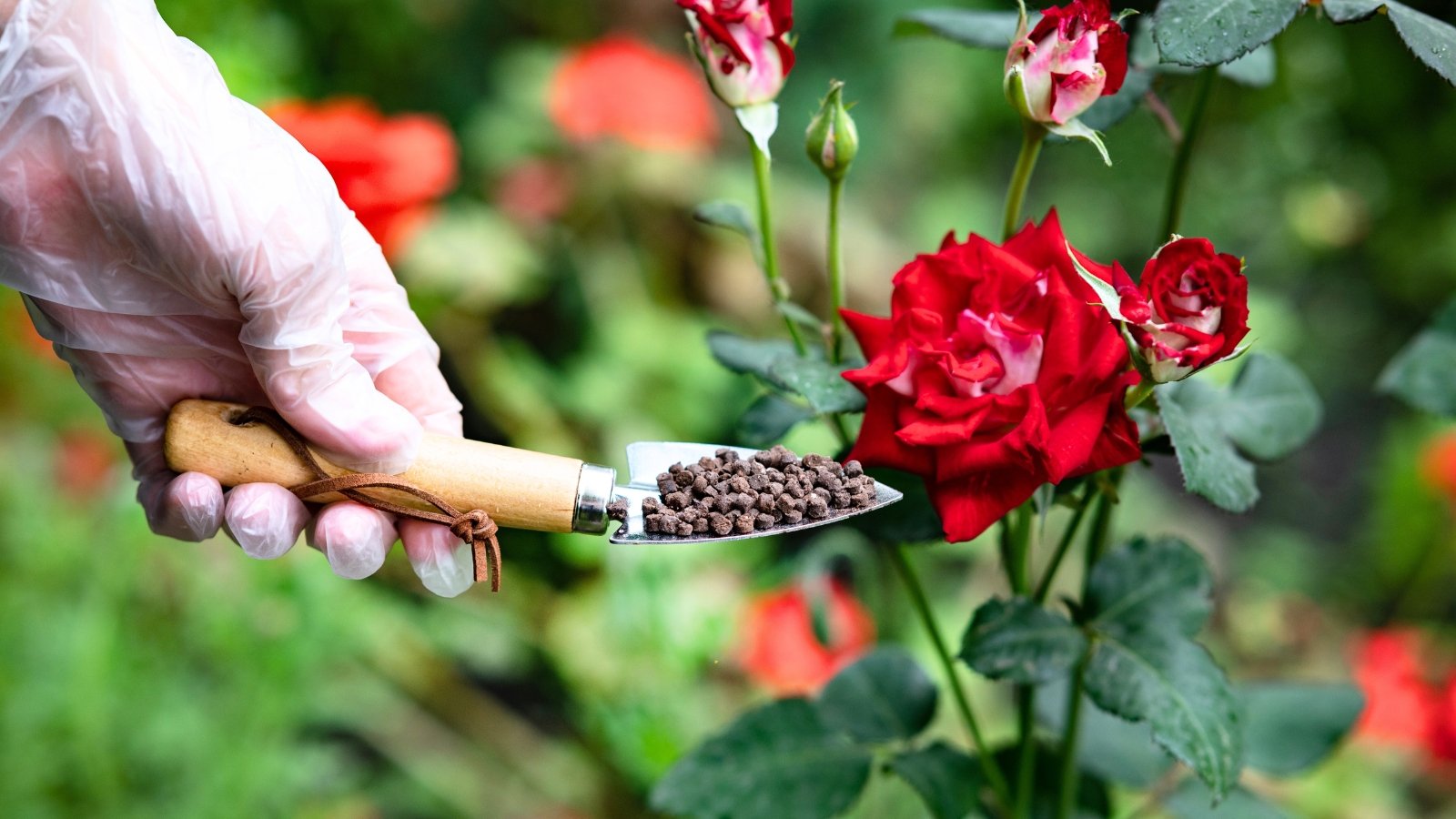 If blooms slow down, try a light compost top-up.
If blooms slow down, try a light compost top-up.Even though it’s hot, perennials sometimes need a feeding to keep them healthy in hotter seasons. They can also use some fertilizer to keep blooming through to fall. Liquids are appropriate for plants that aren’t stressed and dormant.
An even gentler approach that could help your plant’s roots stay cool is to add a bit of well-rotted compost around its base. Worm castings are another good and gentle fertilizer that serves a similar purpose. These act as mulch and a nutrient source, and are less direct than a fertilizer. If you’re unsure whether the plant is stressed and you want to fertilize, start with a light dressing of compost or worm castings.
Trees and Shrubs
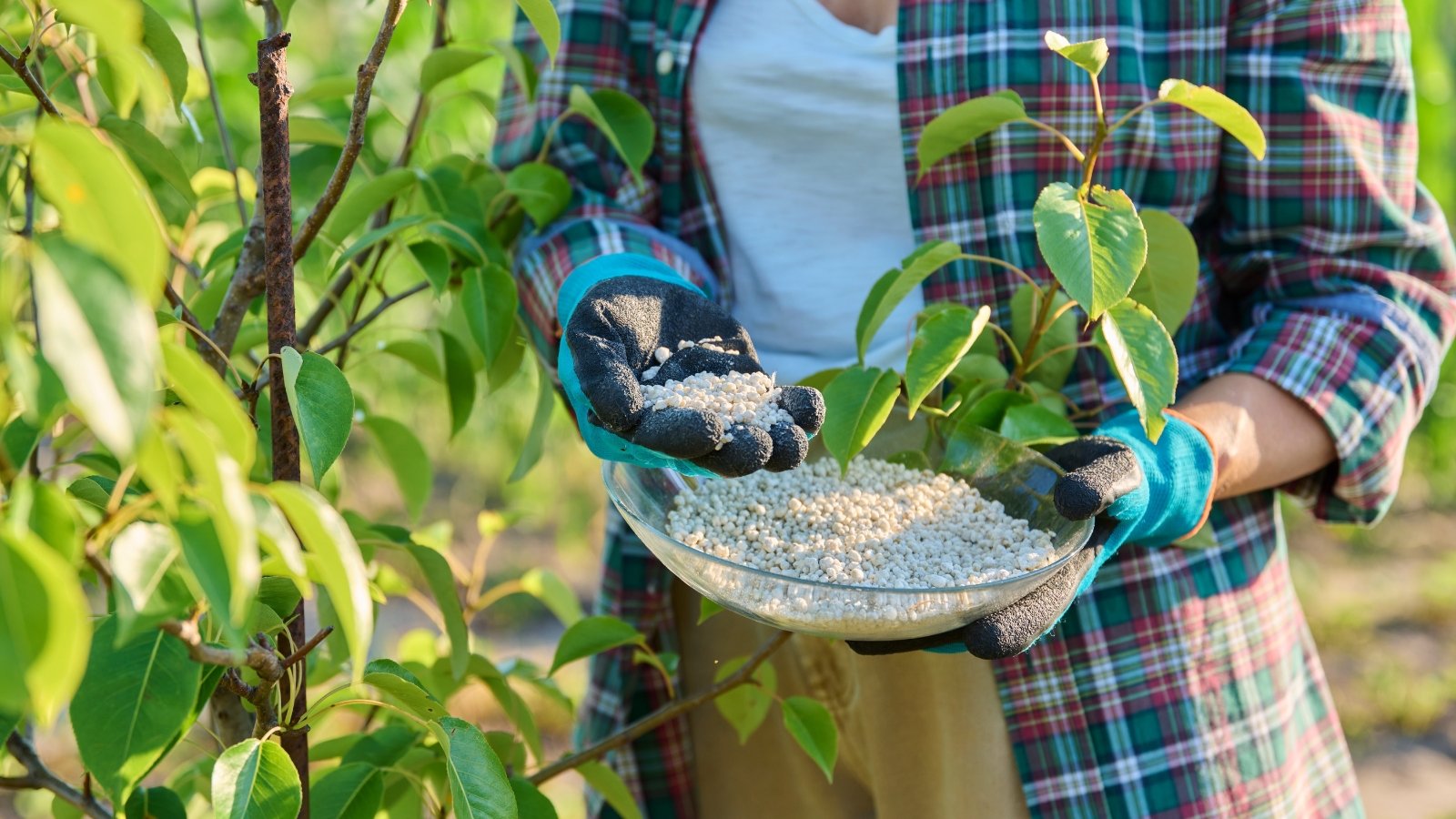 Let trees rest in heat—save feeding for fall.
Let trees rest in heat—save feeding for fall.Most established ornamental trees aren’t hungry in summer, and don’t usually need feeding. At this time, focus on watering them. Provide newly planted trees with an organic fertilizer at planting in spring. In subsequent years, use spring as your best feeding time.
Then resume fertilizing established trees in fall. Remember, whether or not to fertilize in the first place is determined by the tree you planted. Certain native trees may not need feeding at all. A layer of compost or worm castings is a good choice in all situations where you’re uncertain.
Evergreens
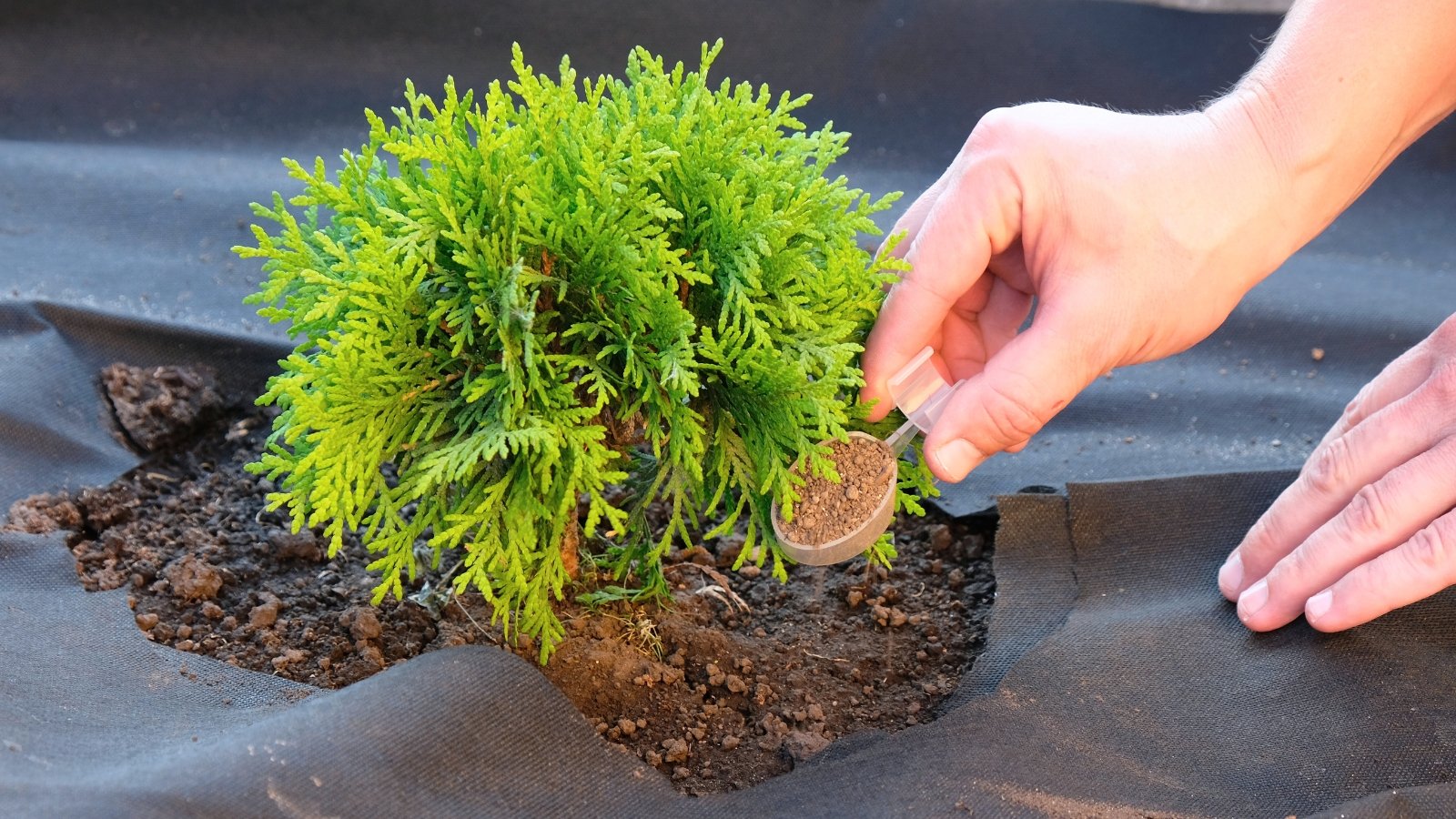 Conifers appreciate slow-release care before midsummer hits hard.
Conifers appreciate slow-release care before midsummer hits hard.When we say evergreens, we are not talking about tropicals. We’re talking about plants like conifers and hollies. Tropicals have their own fertilizing schedule, and it’s best to consult guides about the tropical evergreen you’re growing to decide whether or not it’s time to add some fertilizer.
In areas where summer comes on later, perhaps in mid-July, you can fertilize evergreens regularly from spring until then. You don’t want to prompt new growth even in cooler areas beyond this point, as it could be damaged in an oncoming freeze.
The only exception here is if your evergreen is nutrient-stressed. Then you can add a little bit of slow-release fertilizer around the drip line once in midsummer.
Vegetables
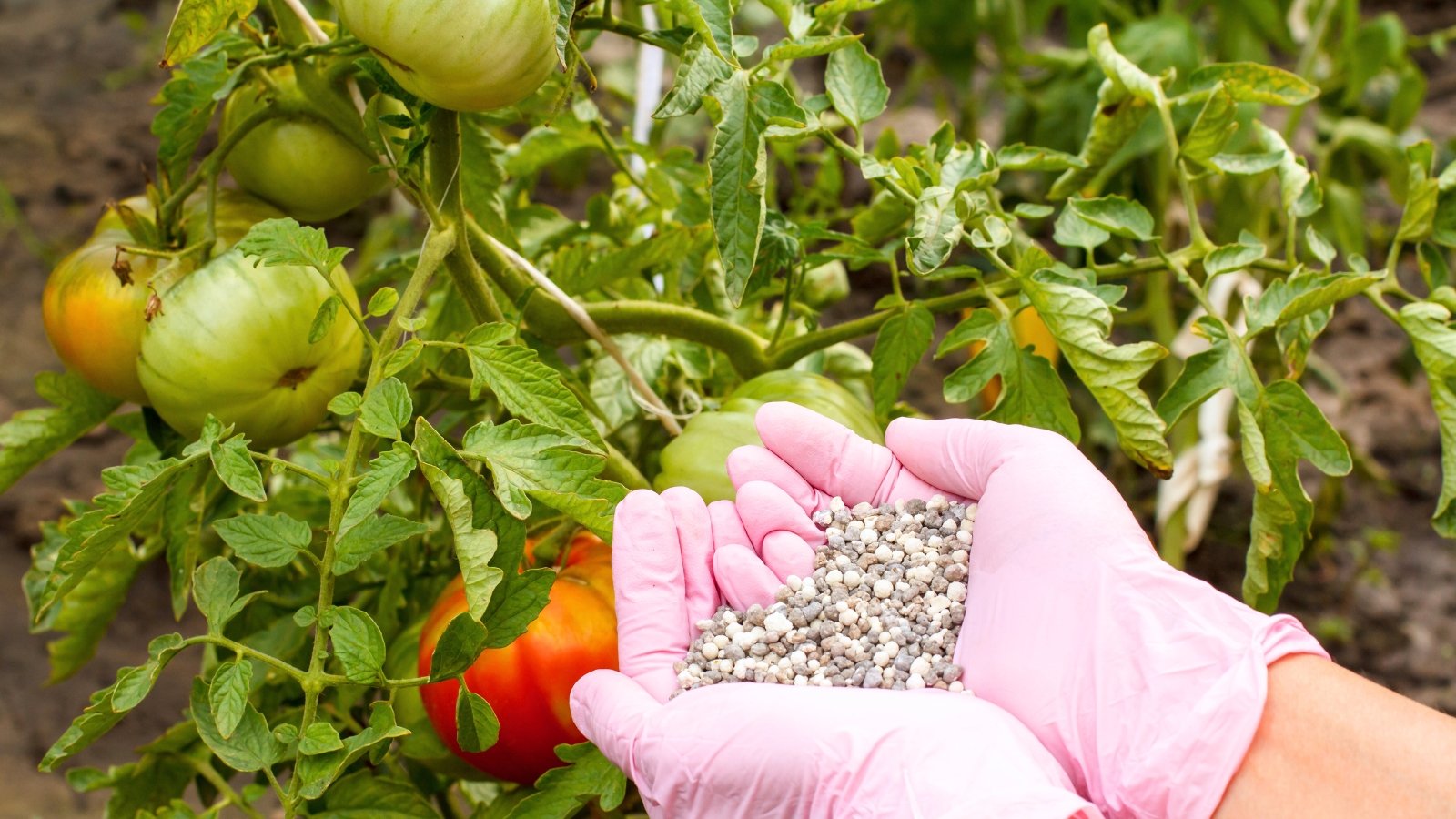 Tomatoes push through the heat if fed gently and often.
Tomatoes push through the heat if fed gently and often.Like most of the plants here, early spring is the best time to fertilize vegetables. A little all-purpose fertilizer mixed into the soil at planting time is enough for most veggies, especially those planted in the ground. However, container-grown veggies need consistent support, as their nutrients sap out of the container due to the need for frequent watering.
For potted vegetables, use a liquid fertilizer diluted in water to feed them regularly. For veggies in the ground, liquids are totally suitable when you’re working with heavy feeders, like tomatoes, corn, and lettuce. Cabbage is also a hungry plant that requires regular fertilization.
In hot weather, most of these plants will not respond well to fertilizing, except tomatoes. I use a diluted liquid tomato-specific fertilizer on my tomatoes every two weeks from fruit set through summer with no issues. My tomatoes appreciate the extra nutrients in the height of summer when the soil surface gets a beating from the sun’s rays.
Fruit Trees and Shrubs
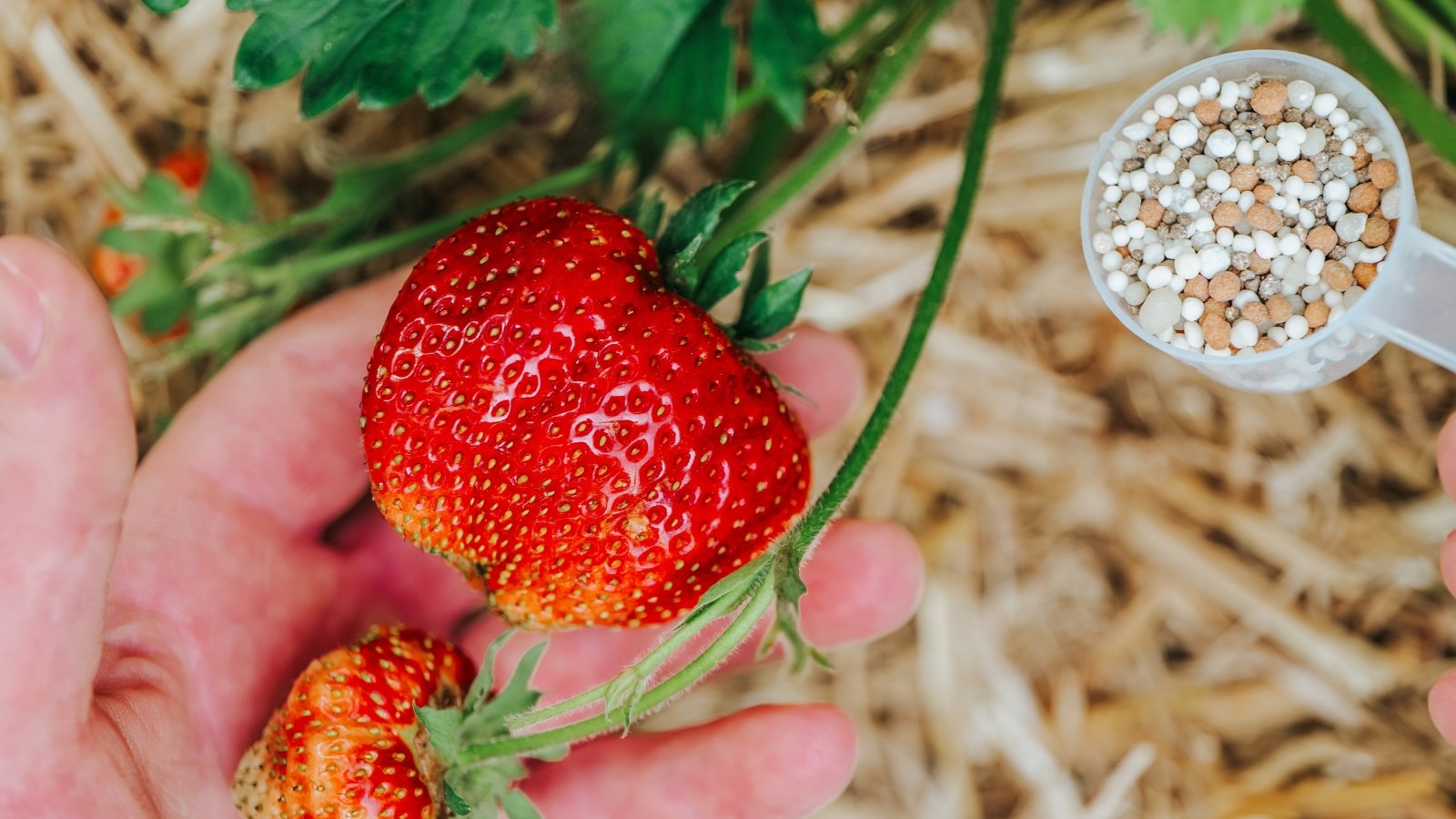 Strawberries love a little extra food during their harvest time.
Strawberries love a little extra food during their harvest time.Most fruit trees and shrubs thrive when they are fertilized at the beginning of the season, and then after the first harvest. In hot weather, avoid fertilizing them. Strawberries, however, do require fertilizer throughout their harvest season, which could be around June for June-bearing varieties, and through summer for everbearing types.
For June-bearing types, harvest lightly with an organic powder or liquid fertilizer after the first harvest. For everbearing varieties, give them a couple of feedings with the same type of fertilizer a few times through harvest season. Avoid powdered ferts in high heat, though, as they do not absorb into the soil in drought conditions.
Other fruits have their specific fertilizing schedules, most of which occur in spring, aside from citrus, which should be fertilized in fall.


 2 weeks ago
10
2 weeks ago
10





















 English (US) ·
English (US) ·  French (CA) ·
French (CA) ·